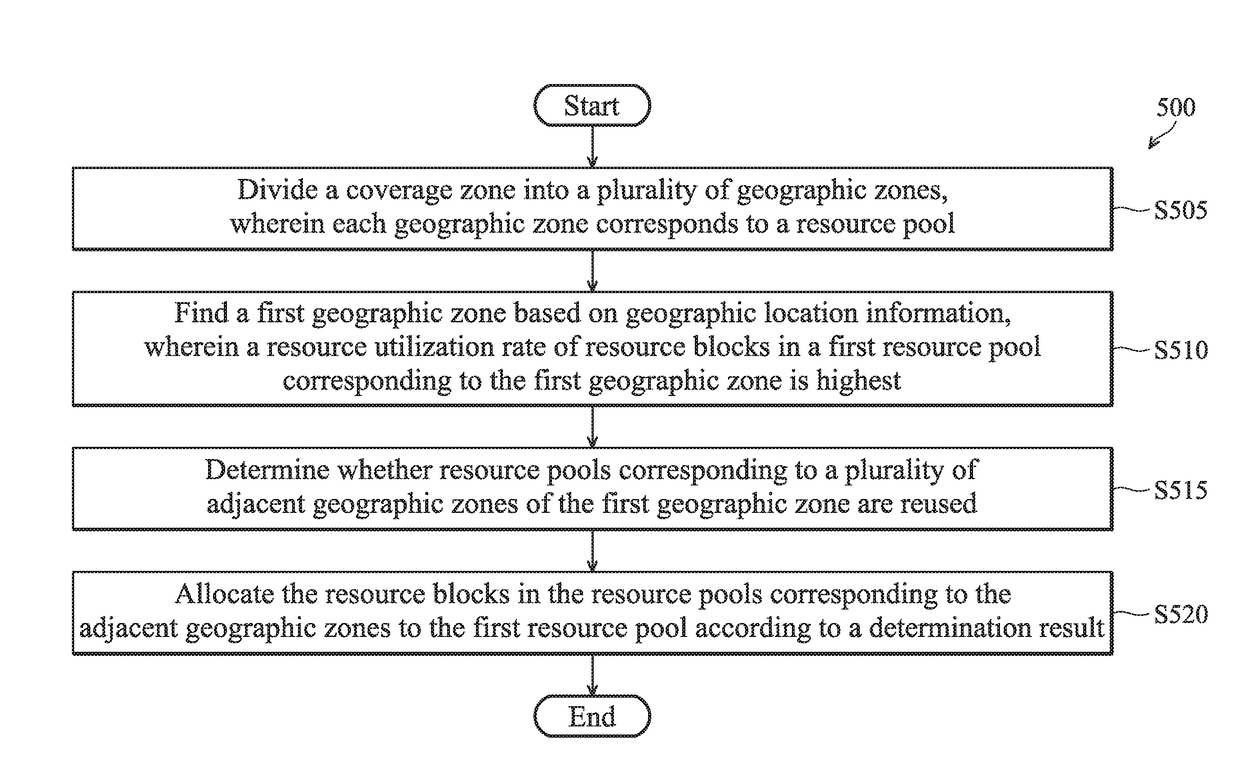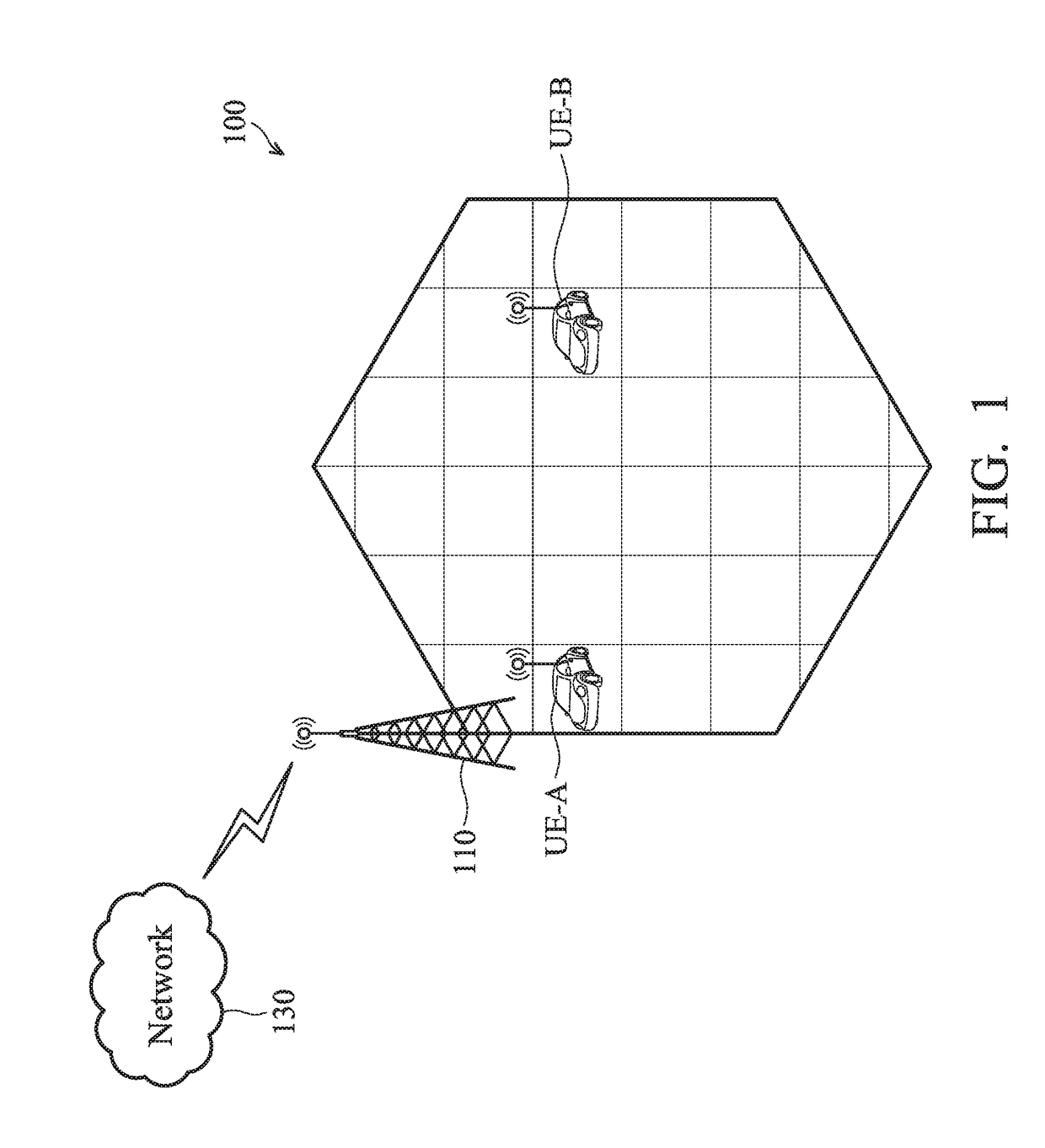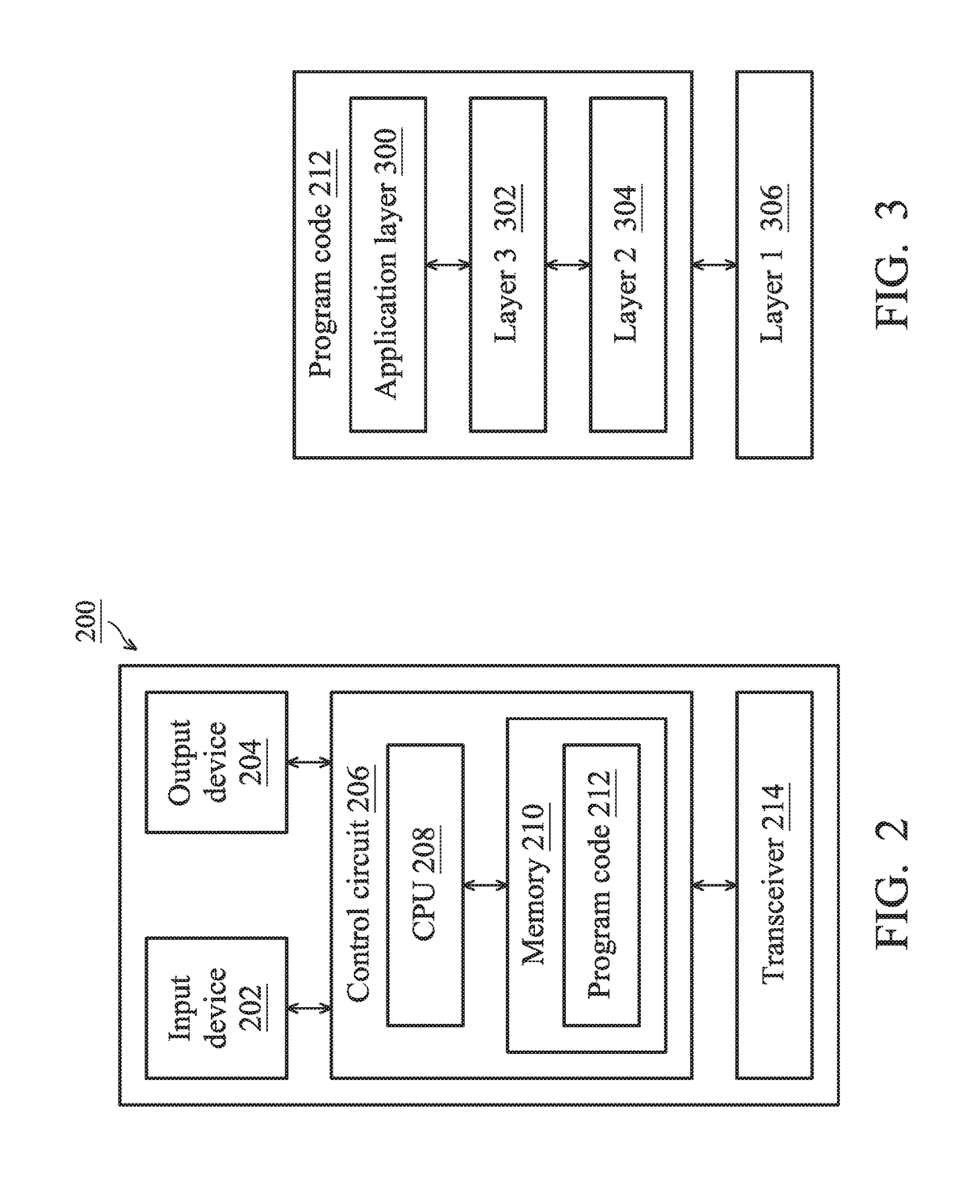Method and communications device for dynamically allocating resources
a communication device and resource technology, applied in the field of wireless communications networks, can solve the problem that the resource utilization rate of resource blocks (rbs) in the resource pool corresponding to this zone may be too high
- Summary
- Abstract
- Description
- Claims
- Application Information
AI Technical Summary
Benefits of technology
Problems solved by technology
Method used
Image
Examples
case 1
[0042] The resource pools corresponding to the adjacent geographic zones of the first geographic zone are not reused. In other words, the base station can independently adjust the resource blocks in the resource pools corresponding to the adjacent geographic areas.
case 2
[0043] The resource pools corresponding to the adjacent geographic zones of the first geographic zone are reused. In other words, since some adjacent geographic zones share a common resource pool, the base station cannot independently adjust the resource blocks in the resource pools corresponding to the adjacent geographic zones.
[0044]For Case 1, the base station may allocate resources in 3 different manners. FIGS. 6A-6D are schematic diagrams of dynamically allocating resources in Case 1 in accordance with an embodiment of the present disclosure. In FIG. 6A, it should be assumed that the total number of resource blocks is 100 and there are 9 resource pools. The base station divides a coverage zone 600 into a plurality of adjacent geographic zones, wherein each geographic zone corresponds to a resource pool. The geographic zones with the same zone ID share the same resource pool. For example, geographic zones 1-a, 1-b, 1-c and 1-d whose zone ID is “I” share the same resource pool 1,...
PUM
 Login to View More
Login to View More Abstract
Description
Claims
Application Information
 Login to View More
Login to View More - R&D
- Intellectual Property
- Life Sciences
- Materials
- Tech Scout
- Unparalleled Data Quality
- Higher Quality Content
- 60% Fewer Hallucinations
Browse by: Latest US Patents, China's latest patents, Technical Efficacy Thesaurus, Application Domain, Technology Topic, Popular Technical Reports.
© 2025 PatSnap. All rights reserved.Legal|Privacy policy|Modern Slavery Act Transparency Statement|Sitemap|About US| Contact US: help@patsnap.com



